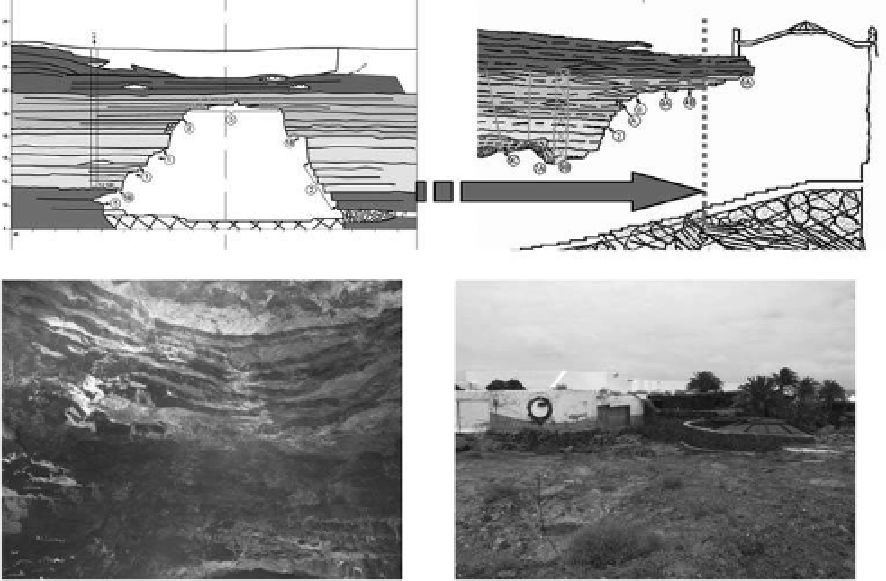Environmental Engineering Reference
In-Depth Information
The criterion followed to decide on the
treatments to be used was to group both problems
and solutions depending on their order of magni-
tude or the size of the phenomenon to be studied.
although the classification of the pathologies
was carried out according to their magnitude, the
extent of the need to treat them was the same when
the objective was to guarantee the general stabil-
ity of the Jameos auditorium in such a way as to
ensure that it could accommodate the public over
relatively long periods.
naturally, a severe structural fault would have
catastrophic consequences, however identifying
such a fault is relatively easy and the probability of
its occurrence very low. nevertheless, other faults
which have an affect to a lesser degree are more dif-
ficult to detect and would have a higher probability
of occurrence and their consequences would be far
more serious.
in some ways the risk which defines the need and
scope of the treatment of a specific type of problem
would has to be reassessed in accordance with the
probability of occurrence and the resulting damage.
in this case the use of the complex as an auditorium,
i.e. its use as a venue open to the public, requires the
capacity for a large number of people, in a motion-
less situation, over long periods.
as such, it is absolutely essential to assess the
risk of any type of incident occurring based on
similar values and of lesser magnitude than those
accepted for other types of constructions intended
for human use.
3.2
First-level problems: Structural instability
3.2.1
General features
This is the most important type of problem. it is
related to the possible collapse of all or part of
the arch in the event of exceeding the structure's
resistant capacity formed by the actual layers of
rock in their natural state. This situation is particu-
larly obvious in the entrance area to the audito-
rium where there is the additional problem of the
rock thickness in the area closest to the entrance
Jameos.
This is a laminar-type structure with horizontally
structured layers of rock, superimposed which at
the same time are not very well bound. Their resist-
ant capacity depends to a large extent not only on
the thickness and quality of the rock, depending
on the span or the opening of the cavity, but on the
degree and type of the existing fractures.
The stability conditions can turn into situa-
tions which are dangerous as the result of various
causes amongst which it is worth highlighting the
following:
- The increase in external loads which can be eas-
ily avoided by preventing access to the surface.
- changes in the interior geometry of the arch
which modify the stress when increasing
the opening or the support conditions. This
situation is, to a large extent, related to minor
detachments or loss of blocks along the free
edges of the layers.














